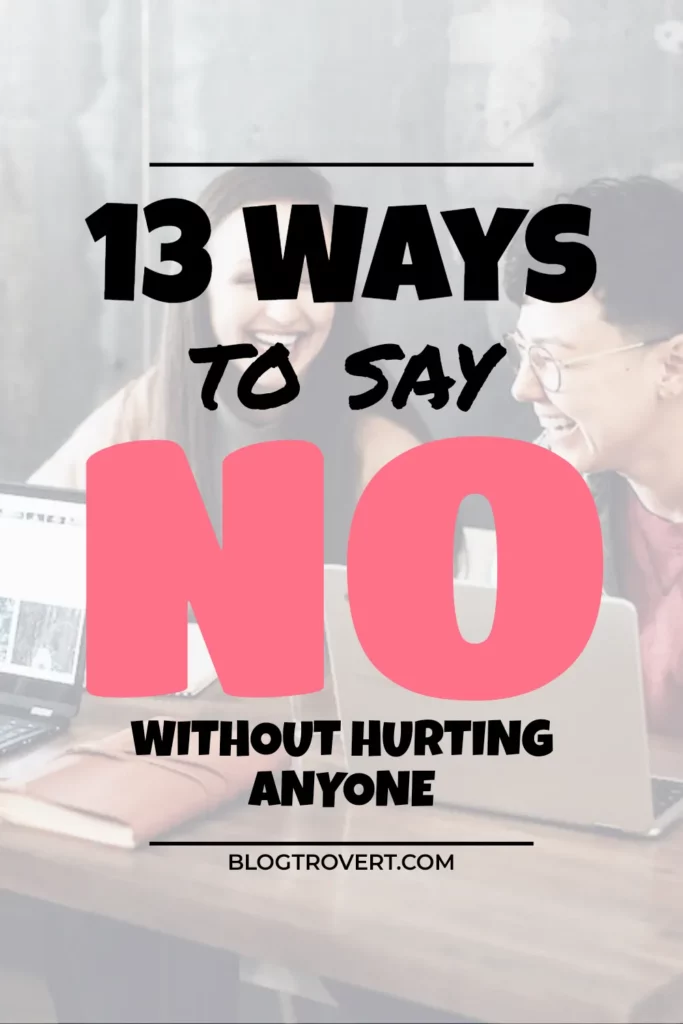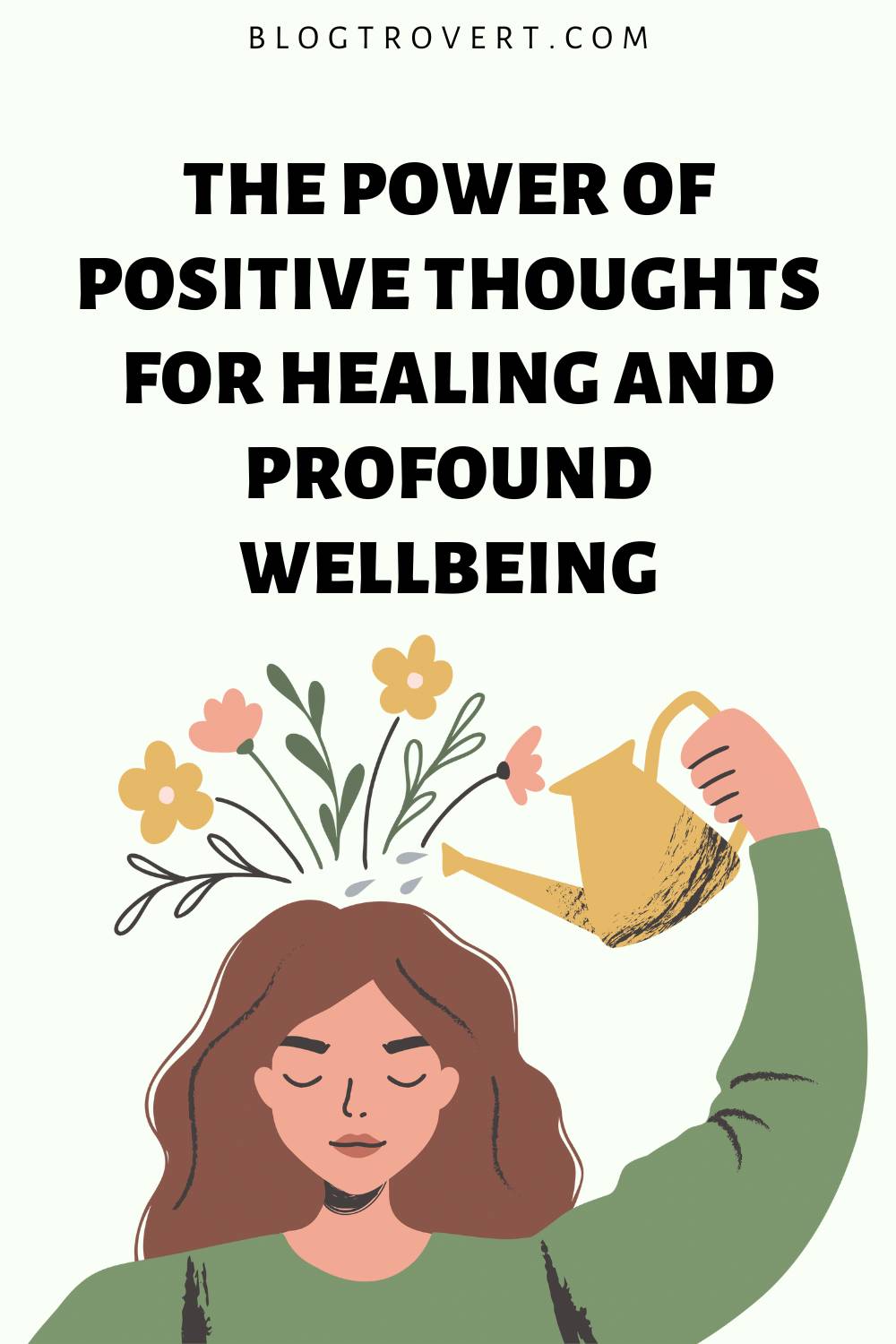Struggling to learn how to say no without hurting someone’s feelings?
You’re not alone!
It’s a tough thing to do, but learning how to turn down requests assertively yet kindly is an essential skill that everyone should have.

In this blog post, we’ll explore the importance of saying No, and I’ll share 13 helpful tips that will teach you how to say no without hurting someone’s feelings.
Saying no with grace and kindness is possible, and I’m excited to show you how! So, grab a cup of coffee, sit back, and let’s dive into these helpful tips together.
How to say no without hurting someone’s feelings
Learning how to say no without hurting someone’s feelings is an exceptional skill. It is often hard though, because you don’t want to come off rude or make the other person feel bad. But saying no can be beneficial for both parties.
Before you reject an offer or refuse a request, take your time and decide what you need. Appreciate their opinion, even if you can’t do what they’re asking. Explain why you’re declining; show that you understand their point-of-view. If possible, suggest an alternative.
If you actively listen and speak with kindness, the other person will accept your decision without being hurt. There are no rules, but having a plan will help set boundaries. That way, both of you will leave feeling positive.
Tips on how to say no without someone’s feelings
It’s difficult to say no without hurting someone’s feelings. Different situations call for respectful responses. Here are tips on how to say no without feeling guilty or causing pain:
Identify your own needs
When saying no, remember your needs and boundaries. Ask yourself questions such as, “What do I have going on right now?” or “What is important to me?” Consider if saying yes will make matters worse.
Focus on the need or want you are rejecting. Show empathy with phrases like “That sounds really hard.” Explain why you said no without blaming or criticizing. For example, “I appreciate you thinking of me, but because of my current workload, I don’t think I’m able to take this project on.”
Be kind yet firm. Respect yourself and those around you.
- Recognize your needs and boundaries.
- Show empathy.
- Explain why you said no without blaming or criticizing.
- Be kind and firm.
- Respect yourself and those around you.
Be honest
If you want to know how to say no without hurting someone’s feelings, you need to employ honesty. I know this may sound scary, but trust me, it’s important.
Honesty can prevent hurt feelings in the long run because it avoids confusion and misunderstandings. When you’re honest, you give the other person a clear understanding of where you stand, which can help them accept your answer more easily.
But how do you say no honestly without hurting the listener?
The key is in your delivery. Instead of focusing on what you can’t do, focus on what you can do. For example, instead of saying “I can’t help you with that project,” try saying “I would love to help, but I’m currently swamped with my workload.”
Phrasing it this way means you are acknowledging their request while also being honest about your availability. If you will assist with something else, you further ask, “Is there anything else I can do to support you?”
Overall, being honest doesn’t have to be a negative thing, but try as much as possible to deliver your message with kindness and empathy. This way you can prevent hurt feelings while also maintaining your own boundaries.
Be direct
Being direct can help prevent any confusion or misunderstandings that might arise from not being straightforward.
Now, you might think, “but isn’t it rude to be direct?” Not at all! There are ways to be direct without being impolite or hurtful.
For example, instead of saying “No, I can’t help you with that,” try saying “I’m sorry, but I’m not able to help you with that right now.” This shows that you’re being straightforward while still being respectful of the other person’s feelings.
Being direct doesn’t mean being harsh or blunt. It simply means being clear and to the point. So next time you need to say no without hurting someone’s feelings, consider being direct!
Use “I” statements
Using “I” statements means taking ownership of our own feelings and expressing them in a non-confrontational way.
For example, instead of saying “You’re always asking me for favors, it’s so annoying,” try saying “I feel overwhelmed when I’m asked for too many favors.”
See how the focus shifts from attacking the other person to expressing our own emotions?
It’s a simple but powerful technique that can make all the difference in how we communicate.
To use “I” statements effectively, try to focus on your own emotions and avoid generalizing or assuming the other person’s intentions. Stick to specific situations and express how they make you feel.
Show empathy
This one is all about recognizing and acknowledging the other person’s feelings. When you say no, it’s important to show that you understand where they’re coming from and that their feelings are valid.
You might say something like, “I can understand why you’re asking me for this, and I appreciate you value my opinion.”
Showing empathy doesn’t mean you have to agree to the request, but it means that you’re showing the other person who you care about them and their feelings.
You might also try saying something like, “I know this is really important to you, and I’m sorry that I can’t help this time.”
By showing empathy, you’re building a bridge between yourself and the other person, rather than burning it down. Remember, empathy can go a long way towards preserving the relationship, even when you have to say no.
Remember that the goal is to say no without hurting someone’s feelings, so be mindful of how your tone may come across, and adjust it accordingly.
Suggest alternatives
When you suggest an alternative, you’re not just shutting down the request, but you’re showing that you’re willing to work with the other person to find a solution that works for both of you.
For example, if your friend invites you to a party that you’re not interested in attending, instead of simply saying no, suggest an alternative like meeting up for lunch the following day or planning a different activity that you both enjoy.
This way, you’re not just saying no to the party, but you’re still showing that you value their friendship and want to spend time together.
Another great example of suggesting alternatives is when you’re at work and your boss asks you to take on a project that you simply don’t have time for. Instead of saying no outright, suggest an alternative like delegating the task to someone else on the team or pushing back the deadline by a few days.
This way, you’re not just saying no to your boss, but you’re also showing that you’re committed to finding a solution that works for everyone involved.
Be gracious
When we approach situations with kindness and understanding, even when we have to say no, it shows the other person we value them and care about their feelings.
So, how can we be gracious when saying no?
One way is to start by expressing gratitude. Thank the person for considering you or for their request. This lets them know you appreciate their thoughtfulness and efforts.
Another way is to be respectful and understanding of their perspective. Acknowledge their feelings and let them know you understand why they’re making the request. This can help them feel heard and valued, even if you ultimately have to say no.
Practice active listening
First off, give the other person your full attention. Put your phone down, look them in the eye, and really listen to what they’re saying. Then, paraphrase their request to ensure you understand it correctly. For example, you could say something like “So, if I’m understanding you correctly, you’re asking me to…”
Next, ask questions to clarify any confusion or uncertainties. This helps show the other person you’re invested in understanding their needs and wants.
Finally, respond with empathy, even if you’re unable to meet their request. This could look like saying something like “I understand that this is important to you, but unfortunately, I’m not able to help right now.”
Avoid over explaining
Now, we all know how easy it is to fall into the trap of over explaining. We want to be crystal clear about why we can’t say “yes,” so we end up babbling on and on. The problem is that this can create confusion or defensiveness in the other person.
They might think we’re making excuses or that we don’t value their request. To avoid this, it’s important to keep our explanations concise and to the point.
For example, let’s say your friend asks you to help her move to a new apartment this weekend. You can simply say, “I’m sorry, I can’t make it this weekend.” You don’t need to go into detail about why you can’t make it, unless your friend specifically asks.
By keeping your response brief, you’re respecting your friend’s time and also being clear about your availability. It’s a win-win!
Use humor
Using humor can not only lighten the mood but also reduce tension and help the other person take your rejection in stride. Let’s explore how to use humor in a friendly and effective way.
Use humor with tact and appropriateness. You don’t want to appear insensitive or dismissive of the other person’s request. So, instead of outright saying “no,” you can use a humorous phrase to deflect the situation.
For example, if someone asks you to take on a task that you know you can’t handle, you can say something like, “I’d love to, but I’m pretty sure my superpowers only work on weekends!” This response not only conveys your inability to fulfill the request, but also does so in a lighthearted way.
Another way to use humor when saying no is to make light of the situation itself. For instance, if someone asks you to attend a party that you don’t really want to go to, you can say, “Thanks for the invite, but I would melt away with all that sound and people!” This response not only declines the invitation but also injects a little humor into the situation, making it less awkward for both parties.
Set boundaries
Setting boundaries can prevent future conflicts and ensure that both parties know what they expect of each other. Setting boundaries is not about controlling or manipulating the other person, but about communicating your needs and limits respectfully.
So how do you set boundaries respectfully?
Identify what your boundaries are. This might involve reflecting on what makes you feel uncomfortable or what you need in order to feel safe or respected. Once you’ve identified your boundaries, communicate them clearly and assertively.
Use “I” statements to express how you feel and why the boundary is important to you. It’s also important to be consistent in enforcing your boundaries. If someone violates your boundary, calmly and assertively remind them of the boundary and ask them to respect it.
Remember that setting boundaries is an ongoing process, and it’s okay to revise or adjust your boundaries as needed.
The benefits of setting boundaries
Before renegotiating boundaries, set ground rules. Why? To protect yourself, time, and interests. Establishing limits can help to keep things in perspective. Here are some benefits of setting boundaries:
- Self-respect: By setting clear limits on what you will and won’t tolerate, you show you won’t compromise your values or well-being for the sake of others.
- Improved communication: Setting boundaries involves clear and assertive communication. By expressing your needs and limits respectfully, you can improve your communication skills and ensure that both parties feel heard and respected.
- Emotional well-being: When you know what to expect from others and what you’re willing to tolerate, you can avoid feeling overwhelmed or resentful.
- Better relationships: Setting boundaries can actually improve your relationships by creating a sense of trust and respect. When both parties know what to expect and how to communicate their needs, they’re more likely to feel comfortable and secure in the relationship.
- Productivity: When you know what you’re willing to do and what you’re not willing to do, you can focus on the tasks and activities that are most important to you.
Remember that setting boundaries is an important part of self-care, and you should never feel guilty for taking care of yourself.
Do not give false hope
It’s easy to say “yes” when we don’t really mean it, or to make promises we can’t keep. When rejecting a request, be honest and firm.
Don’t make any promises that you can’t keep and don’t offer any vague solutions that you may not fulfill in the end. This will help ensure that both parties are clear about the situation, and that no one ends up disappointed or frustrated.
Stop feeling guilty for saying NO
We all know that saying “no” can be difficult. We might feel guilty or like we’re letting the other person down. But it’s important to remember that saying “no” is not only a right but also a necessary part of protecting our own boundaries.
When you face a request that you don’t want to fulfill, it can help to remind yourself that you don’t owe anyone an explanation. You don’t have to explain why you can’t say “yes” or apologize for your decision.
Sometimes, it can also help to practice self-compassion. Remind yourself that it’s okay to say “no” and that it’s not a reflection of your worth or value as a person.
When we decline a request, we free up time and energy for other important things in our lives. So, learn how to say no without feeling guilty and prioritize your own needs and goals.
Understanding the impact of saying NO
Positive impacts:
- Can improve mental health and well-being by setting boundaries and prioritizing our own needs
- Builds trust and respect within relationships by being honest and transparent
- Sets healthy boundaries within relationships, preventing us from being taken advantage of or overworked
Negative impacts:
- Can lead to hurt feelings, disappointment, or feelings of rejection from others
- May cause missed opportunities or unfulfilled expectations
- Could strain relationships if not communicated clearly and respectfully
Overall, it’s important to balance the positive and negative effects of saying no and approach it with empathy and understanding. But be confident in your decisions and don’t feel guilty afterwards.
If it’s outside your comfort zone, don’t do it. Take care of yourself first.
Conclusion
Having the ability to say no without hurting someone’s feelings is an essential skill for adults. To do this well, using straightforward and confident language plus a few communication techniques is key.
- Listen to what people ask of you.
- Then, explain why you must decline. Apologize if it causes any trouble.
- Offer alternate solutions if you can.
- Forgive yourself if any guilt or uneasiness surfaces.
With patience and understanding, you can learn how to say no without hurting someone’s feelings.


![21 Ways to Become the Best Version of Yourself in [year] 4 21 Ways to Become the Best Version of Yourself in 2025](https://www.blogtrovert.com/wp-content/uploads/2022/11/become-a-better-version-of-yourself.webp)

